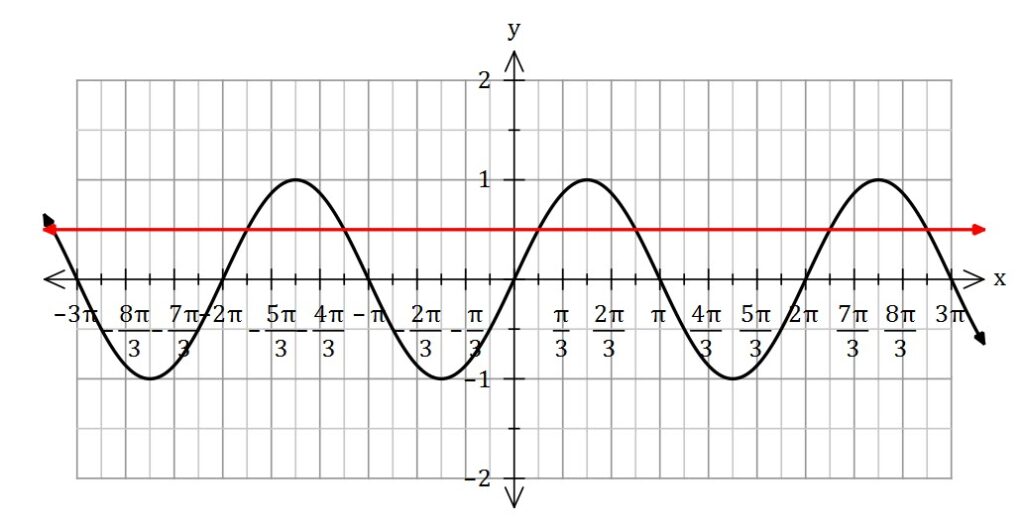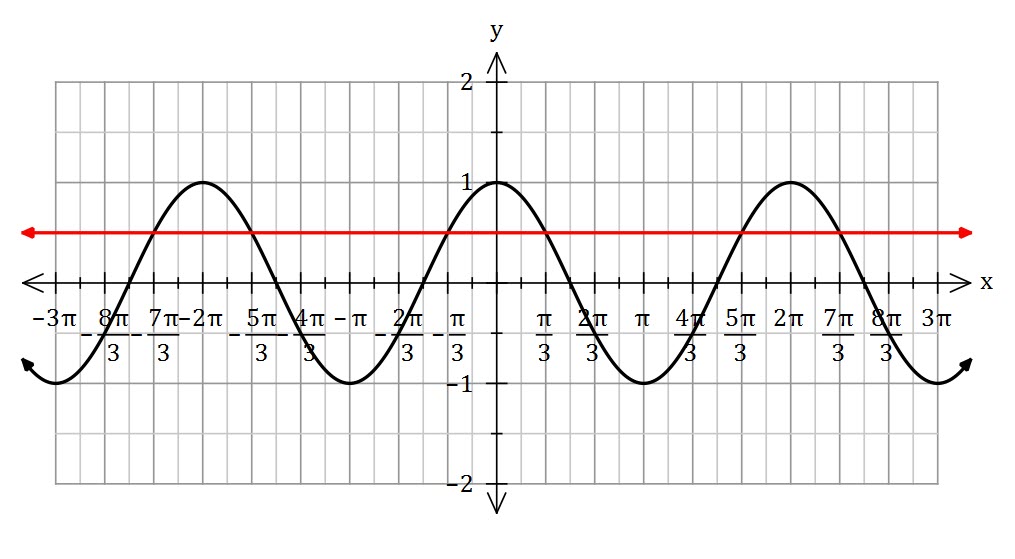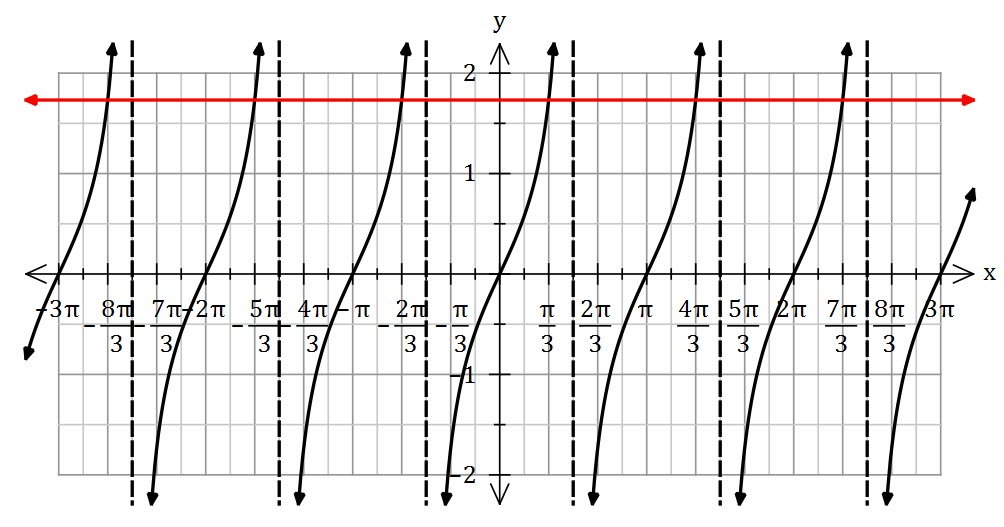Solve ![]() for
for ![]()
Sine is positive in the first and second quadrants.
![]()
![]()
But what if we aren’t given a domain for the ![]() values?
values?
Then we need to give general solutions.
For example,
Solve ![]()

As you can see from the sketch above, there are infinite solutions.
The sine function has a period of ![]() , and so if
, and so if ![]() is a solution then
is a solution then ![]() is also a solution. This means
is also a solution. This means ![]() is a general solution. And we can do the same for the second solution
is a general solution. And we can do the same for the second solution ![]() .
.
In general
We can turn this into one equation
What about cosine?
Solve ![]()

Cosine is positive in the first and fourth quadrants (it also has a period of ![]() . The first two (positive) solutions are
. The first two (positive) solutions are ![]() and
and ![]() .
.
To generalise, ![]() , which we can make into one equation
, which we can make into one equation ![]()
In general
What about the tangent function? Remember tan has a period of ![]() .
.
Solve ![]()

First, note that the solutions are all a common distance (![]() ) apart.
) apart.
Tan is positive in the first and the third quadrant
![]()
![]()
Because all of the solutions are ![]() radians apart, the general solution is
radians apart, the general solution is ![]()
In general
Examples
Solve for all values of ![]() ,
, ![]()
![]()
This is a quadratic equation – we need two numbers that add to ![]() and multiple to
and multiple to ![]() ,
, ![]()
![]()
![]()
![]()
Solve ![]()
![]()
![]()
![]()
![]()
![]()
![]()
